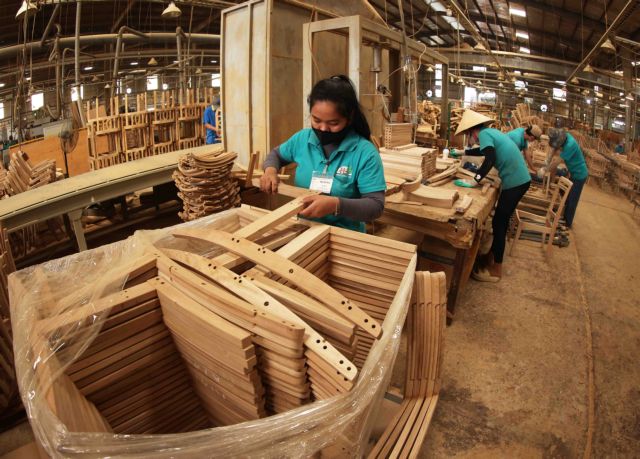The Vietnamese wood industry is facing significant obstacles in terms of expenses, earnings, and the capacity to sustain exports to important markets as a result of new US import levies of up to 50 per cent.

HCM CITY — The Vietnamese wood industry is facing significant obstacles in terms of expenses and the capacity to sustain exports to important markets as a result of new US import levies of up to 50 per cent.
The US has decided to impose high taxes on a variety of imported wood and furniture products, which went into effect on October 14, and are anticipated to rise further in early 2026.
In particular, kitchen cabinets, bathroom cabinets, and associated goods will be subject to tariffs of up to 50 per cent starting in early 2026 - a significant rise from the initial 25 per cent rate.
A 25 per cent tariff on upholstered furniture (sofas, upholstered chairs, etc.) went into effect in October, and might rise to roughly 30 per cent by the start of 2026.
Sawn wood and several other products are subject to a 10 per cent tariff, while plywood and similar items face a 20 per cent countervailing duty.
Vietnamese wood prices are less competitive than those of local products in the US and other tax-exempt nations, which has a direct impact on the country's wood industry.
Billions of dollars worth of exports to the US come under the category of goods subject to hefty taxes of 25-50 per cent.
Following the announcement of the increased tax, US clients immediately reduced or canceled orders, which has had a direct impact on many export enterprises, particularly upholstered furniture producers.
FDI companies with factories in Việt Nam are also concerned about shrinking profit margins, as they will have to reduce prices to preserve market share and split tax expenses with partners.
The US gives trading partners three months to negotiate particular tax rates. Furthermore, as of August 7, Việt Nam is liable to a 20 per cent reciprocal tax and could face a 40 per cent tax penalty if it does not verify its export products' provenance.
Businesses are advised to diversify export markets and cut manufacturing costs, while State assistance such as exemptions and reductions in land rent, social insurance, and logistical costs are of utmost importance, according to experts.
In the long term, Vietnamese wood manufactures should consider shifting towards new markets, particularly Europe and the Middle East, with the latter seeing high demand for furniture products for hotels, resorts and high-end apartments.
Vũ Quang Huy, director of the Tekcom Joint Stock Company, said substantial duties are currently being applied to various wood products.
Although plywood is not currently subject to the import tariffs, it is still under an ongoing anti-dumping investigation. If duties are imposed, the total rate could reach around 20 per cent. The investigation’s results are expected to be announced by the end of 2025.
Meanwhile, Nguyễn Ngọc Thanh, general director of the Thiên Phát Company, a company that exports kitchen and bathroom cabinets to the US, predicts that the Vietnamese wooden furniture industry will encounter numerous challenges in the future because of the high risk of additional US investigations.
In addition, Đặng Khánh Linh, a representative of the Vietnamese Embassy in the US, said that both short-term and long-term measures are needed to adapt to the US political situation and sustain exports. — VNS





